Apitherapy is a therapeutic system that is based on the use of bee products (honey, bee venom, propolis, royal jelly, beeswax, pollen and their combinations) in order to prevent and treat different diseases (1). This article presents a summary of the history of apitherapy as well as the results of case series of patients treated with apitherapy from the perspective of different medical systems.
Brief history of apitherapy
The history of apitherapy, like the history of medicine is interesting, complex and goes hand in hand with conceptual developments on health and disease; they are, in turn, dependent on scientific definitions, cultural and social aspects. The determination of the exact moment at which the products of the hive began to be used for some therapeutic purpose is not simple. It is recognized that the relationship of human beings with bees and their cultivation goes back even before the development of writing. Objects collected from ancient stages of the stone age show traces of beeswax inside and rudimentary paintings show honey extraction activities, testing the use of beehive products (2).
In Mesopotamia, around 4,000 B.C., honey was already used for different purposes. Sumerian mythology attributed to honey the ability to prolong life and was a sacred gift from the gods (3). In Egypt bees were considered sacred and the result of the tears of the god Ra (sun god) shed on the earth. This divine nature meant that the products of the hive were used in magical and religious rituals (4). In the Ebers papyrus, one of the oldest known medical treaties, honey was described in the treatment of wounds and as a basis for the preparation of ointments and healing drinks with other ingredients such as beer and castor; the available historical evidence of the recovered papyri describes the use of honey also for the management of respiratory diseases with cough and in ophthalmic diseases in which case its mixture with beeswax was used (5). There are also references on the use of beehive products (mainly honey) in Hebrew settlements, their link with the sacred is embodied in the ancient texts of the Christian Bible and the Torah of the Jews.
Hippocrates, Greek and father of Western medicine, understood the benefits of honey and other products of the beehive in the treatment of diseases. Honey, from his understanding, had healing powers that even accompanied the sick to the world beyond; popular culture mentions that in its tomb bees built a column of honey and healing beeswax (6). Galen in his studies on the usefulness of food, described the usefulness of beehive products and used them in the treatment of the emperor (7).
In ancient India, an important medical doctrine was also developed. Practitioners of this medicine were the first to describe a basic and recognized characteristic in the contemporary western world: there are different types of honey and each of them has particular properties in the treatment of diseases. They describe at least 8 different types of honey. The other products of the beehive are also used in this medical system and show interesting utilities. Royal jelly, bee pollen, bee venom and larvae were also used, although on a smaller scale than honey. Its uses were multiple, among them the control of infections such as herpes virus infection, intestinal transit disorders, infertility, erectile dysfunction, cancer, viral and bacterial infections, aging and lung diseases (8).
The ancient texts of traditional Chinese medicine expose the usefulness of the use of bee stings in the treatment of various diseases, especially for the control of painful and inflammatory conditions for more than 4,000 years (9).
The products of the beehive are described in the books of Chinese medical matter:

During the middle ages there was a relative forgetfulness of the concepts about the use of beehive products that were recovered during the renaissance. The importance of bees at the time of renaissance , although it was not described in scientific texts, was reflected in art (13).
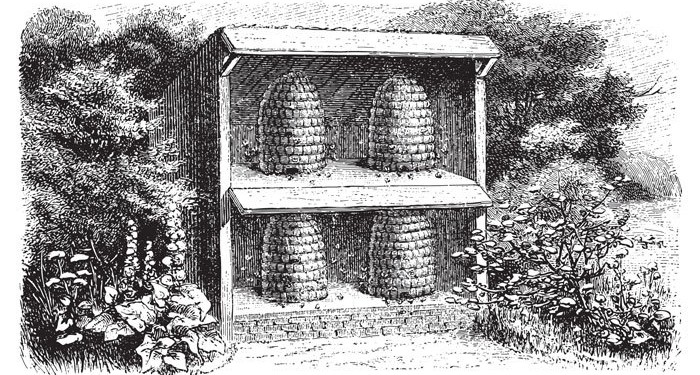
The first and second world war were space to retake ancestral knowledge. During them honey and propolis were used in wound management to prevent infection. In 1933, Dr. Bodog F. Beck, a doctor of Hungarian origin, published a treatise on the application of bee venom in rheumatism (14).
It is clear that currently the understanding of apitherapy is part of the current medical concepts about the cause of diseases. In the contemporary era, thanks to advances in the study of molecular and genetic biology, it has been possible to understand the different mechanisms through which the products of the beehive act. There are also several clinical trials that provide an important body of scientific evidence for the uses of apitherapy.
The results of several series of cases in which apitherapy has been applied from different medical systems that account for the current understanding of this therapy are explored below.
Chinese traditional medicine. Bi syndrome / yin kidney deficiency/ Chronic lumbago
Patient characteristics:
- 20 patients, 75% men
- No surgical history
- Evolution of 2 to 4 years
- Average age 55 years
- Previous management with non-steroidal anti-inflammatory
- Imaging and traditional Chinese medicine diagnosis
Treatment established
- Bee venom 0.1 mg diluted in 0.9 ml saline solution. 1 session per week x 12
- The application was performed at acupuncture points: Du3, bilateral V23, bilateral lumbar ashi point (2 to 6), bilateral V40, R3-bilateral. 0.05-0.1 ml per point was applied
- Honey with royal jelly, 10 grams per day.
Outcome:
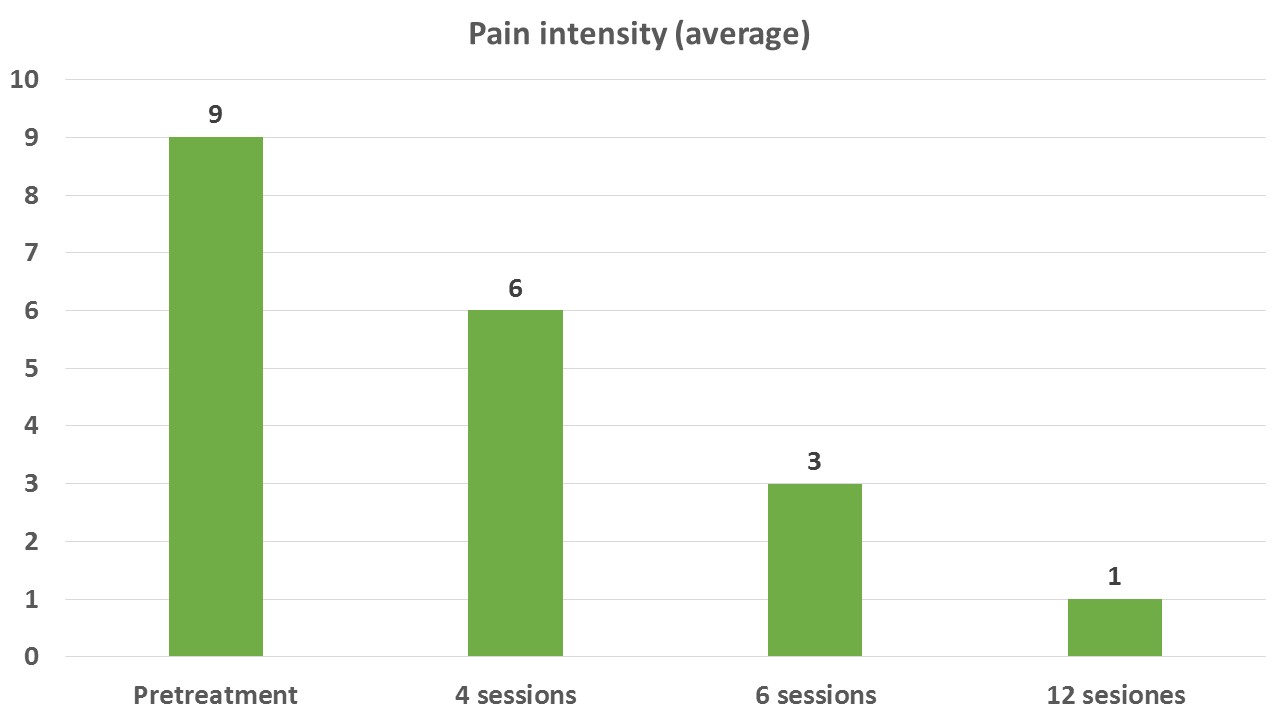
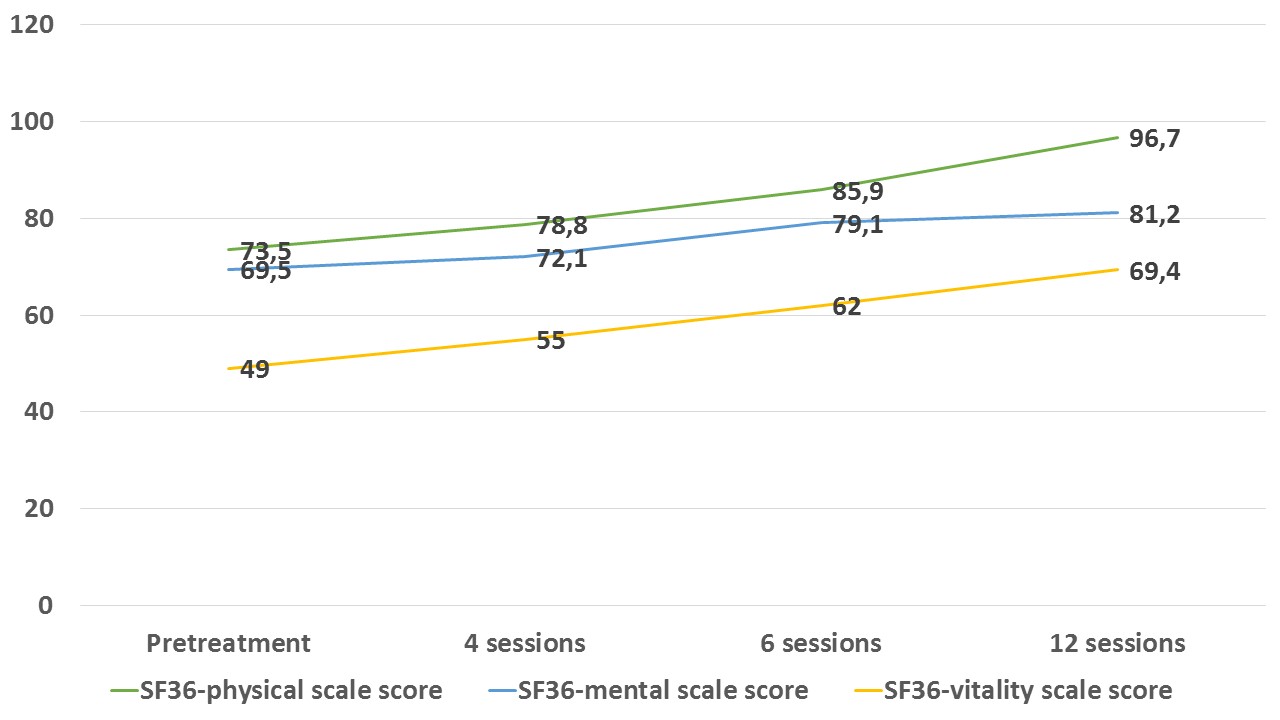
Neuraltherapeutic Medicine. Osteoarthritis
Patient characteristics:
- 80 patients, 80% women
- No surgical history
- Evolution of 2 to 5 years
- Average age 60 years
- Previous management with non-steroidal anti-inflammatory and physical therapy
- Imaging and clinical diagnosis. 6 to 8 joints affected per patient, the most frequent were the knees
Treatment established
- Bee venom 0.5 mg diluted in 2 ml of procaine. 1 session every 15 days. 16 sessions 0.1 to 0.2 ml applied per point
- Honey with royal jelly, 10 grams per day.
- Bee pollen 10 grams per day
- Honey with propolis. 10 grams per day
Outcome:
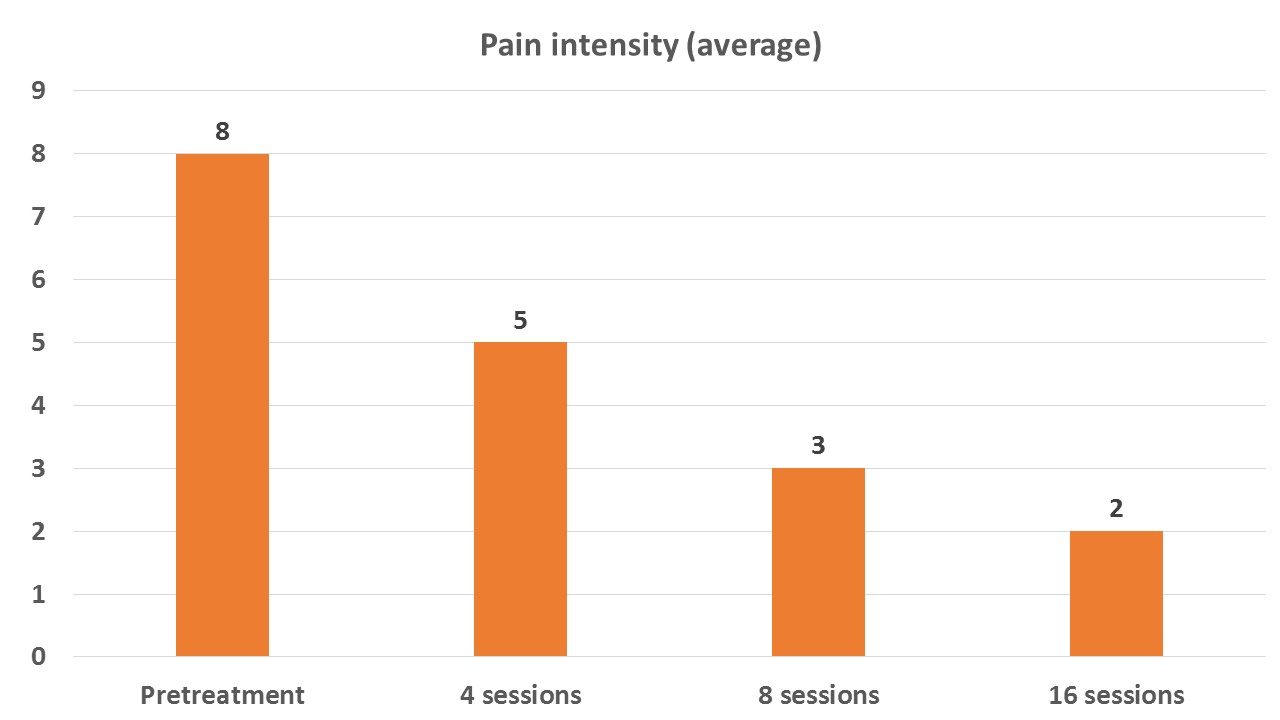

Functional medicine- serum therapy. Fibromyalgia
Patient characteristics:
- 40 patients, 95% women
- Evolution of 1 to 5 years
- Average age 44 years
- Previous management with non-steroidal anti-inflammatory
- Clinical and laboratory diagnosis
Treatment established:
- Vitamin C IV 15 grams + bee venom 0.6 mg in 500 ml. 2 times a week
- Treatment for 3 months
- Coenzyme q10 oral once a day
- Royal jelly 500 mg every day
- Honey + propolis 10 grams every day
Outcome:
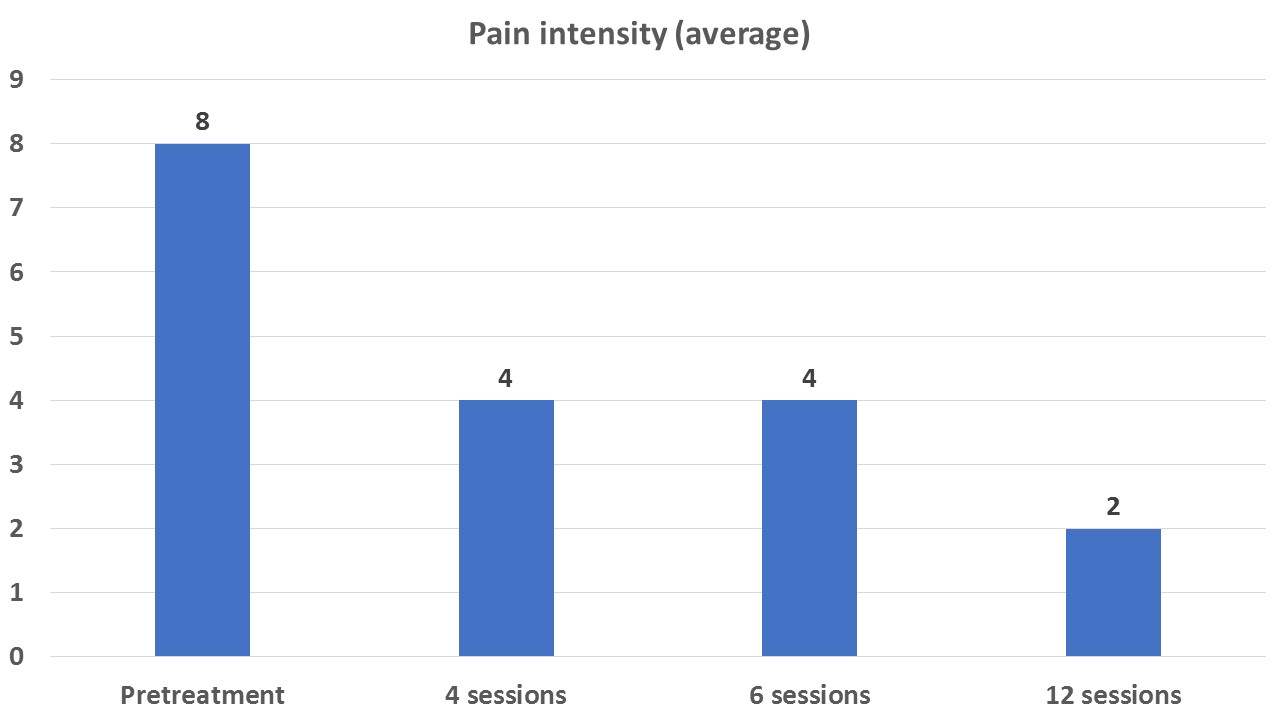
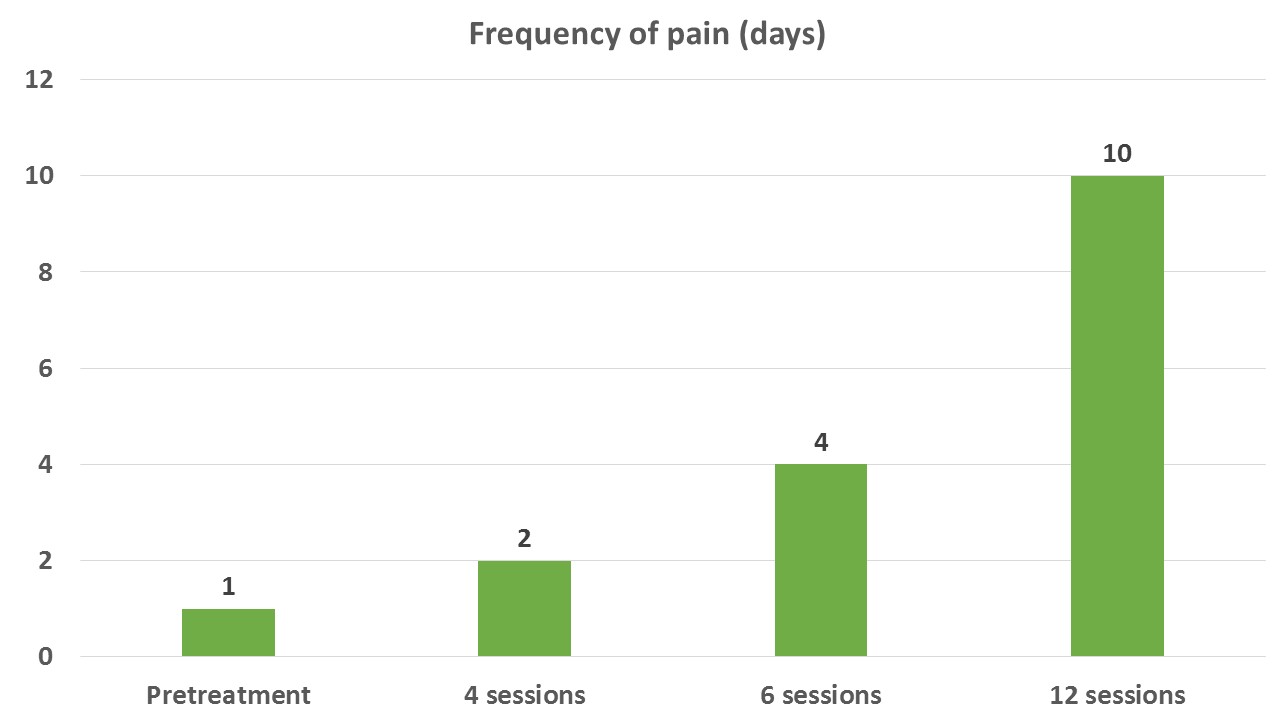

Western medicine. HIV / AIDS infection
Patient characteristics:
- 15 patients, 80% men
- Evolution of 1 to 3 years
- Average age 25 years
- Pharmacological management with 4 medications
- Patients with stage B2 and B3 of the disease
Treatment established:
- Bee venom 1 mg diluted in 4 ml saline. IV, once a week. 6 months
- Honey with royal jelly, 10 grams per day
- Ethanol Propolis Extract, 20 ml per day
Outcome:


Aesthetic medicine. Cellulitis
Patient characteristics:
- 10 patients, 100% women
- No surgical history
- Average age 32 years
- In medical management
Treatment established:
- Bee venom 0.3 mg diluted in 0.7 ml saline. 1 session every week x 8, then 1 session every 15 days x 8. 0.05-0.1 ml per point was applied
- Honey with royal jelly, 10 grams per day
Outcome:
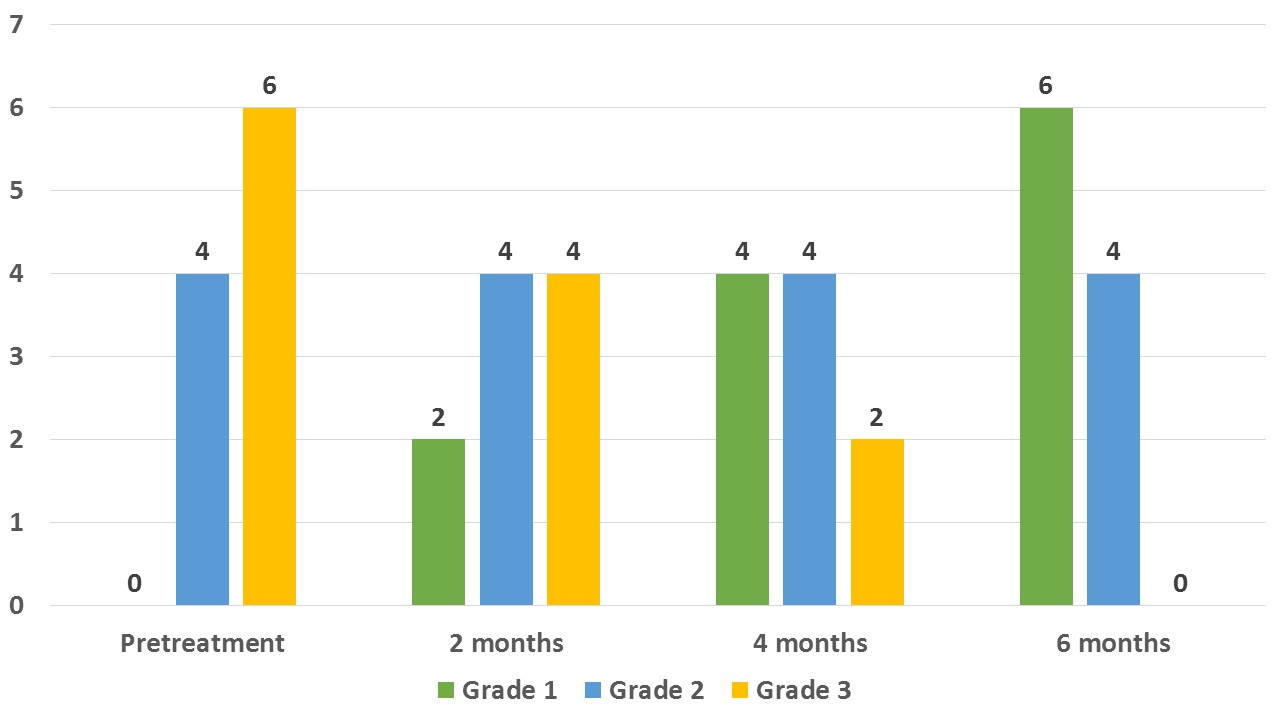
Bibliographic references
1. Jagua-Gualdron A. Pasado, presente y futuro de la apiterapia. Primera ed. Bogotá D.C.: Sociedad Colombiana de Apiterapia; 2017.
2. Pager H. Cave Paintings Suggest Honey Hunting Activities in Ice Age Times. Bee World [Internet]. 1976 Jan 31;57(1):9–14. Available from: https://www.tandfonline.com/doi/full/10.1080/0005772X.1976.11097580
3. Christman J. The Gilgamesh Complex: The Quest for Death Transcendence and the Killing of Animals. Soc Anim [Internet]. 2008 Oct 1;16(4):297–315. Available from: http://booksandjournals.brillonline.com/content/10.1163/156853008×357649
4. Kristky G. The Tears of Re. Beekeeping in Ancient Egypt. Primera. New York: Oxford University Press; 2015. 131 p.
5. Leek FF. Some Evidence of Bees and Honey in Ancient Egypt. Bee World [Internet]. 1975 Jan 31;56(4):141–63. Available from: https://www.tandfonline.com/doi/full/10.1080/0005772X.1975.11097564
6. Jouanna J. Greek Medicine from Hippocrates to Galen. Stud Anc Med. 2012;
7. Wilkins J. Galen on food. Vol. 52, The Classical Review. 2002. p. 275–6.
8. Garodia P, Ichikawa H, Malani N, Sethi G, Aggarwal BB. From ancient medicine to modern medicine: Ayurvedic concepts of health and their role in inflammation and cancer. Vol. 5, Journal of the Society for Integrative Oncology. 2007. p. 25–37.
9. Dong J. The Relationship between Traditional Chinese Medicine and Modern Medicine. Evid Based Complement Alternat Med [Internet]. 2013;2013:153148. Available from: http://www.pubmedcentral.nih.gov/articlerender.fcgi?artid=3745867&tool=pmcentrez&rendertype=abstract
10. Leung AY. Traditional Toxicity Documentation of Chinese Materia Medica???An Overview. Vol. 34, Toxicologic Pathology. 2006. p. 319–26.
11. Chang H-M, But PP-H. Pharmacology and applications of chinese materia medica [Internet]. Vol. 2, World Scientific. 2001. p. 807–11. Available from: http://books.google.com/books?id=DyIlwre-TUUC&pgis=1
12. Dong-Lu B. Traditional Chinese Materia Medica – A Retrospect and Prospect. Mom Inst Oswald Cruz. 1991;86(Suppl. II):1–4.
13. Johnson G a. Renaissance art : a very short introduction. Very short Introd. 2005;157 p.
14. Kim CMH. Apitherapy – Bee Venom Therapy. In: Biotherapy – History, Principles and Practice [Internet]. 2013. p. 77–112. Available from: http://link.springer.com/10.1007/978-94-007-6585-6_4

 Español
Español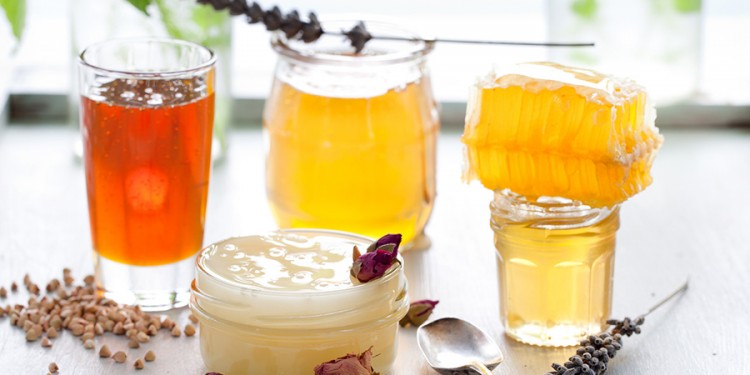
Pingback: sildenafil
Pingback: viagra
Pingback: sildenafil citrate
Pingback: revatio
Hii,
This is Great Post.. for me, Thanks for sharing with us!!
สล็อต 888 เป็นที่ชื่นชอบอย่างยิ่งในช่วงเวลานี้ เพราะว่านอกเหนือจากจะสร้างความสนุกสนานร่าเริงแล้วยังสามารถสร้างรายได้เยอะแยะอีกด้วย pg slot ไม่ใช่ทุกคนที่ทำเป็นเกมสล็อต
สล็อต เล่นง่ายเข้าง่ายสะสมเกมสล็อตพีจีออนไลน์ไว้อย่างยัดเยียดแล้วหลังจากนั้นก็เป็นเว็บที่มาแรงที่สุดของยุคนี้ PG SLOT เว็บตรงไม่ผ่านเอเย่นต์ แจ็กพอเพียงตแตกเยอะมาก แตกจริง
jgaming88 เว็บไซต์พนันออนไลน์ที่โด่งดังแล้วก็มาแรง pg slot เป็นเว็บไซต์พนันยอดฮิตที่คนไหนก็เลือกเข้าไปเล่น ด้วยเหตุว่าตรงนี้จะมีความน่าดึงดูดใจมากยิ่งกว่าเว็บทั่วๆไป
click me my name ทดลองเล่นสล็อตฟรีทุกเกม
click me my name ambsuperslot.app
click me my name rachaslot ราชาสล็อต
click me my name รวมเว็บ lava slot 100
click me my name ไอบีซ่า88